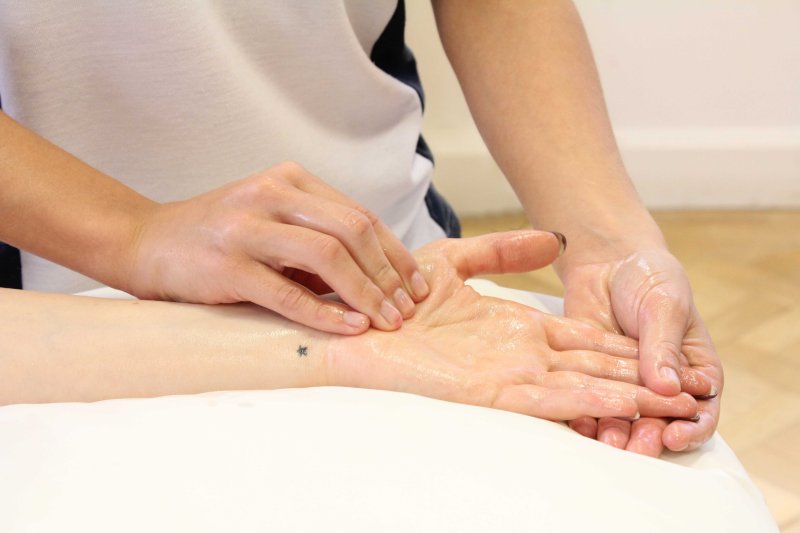
In an increasingly digital world, where our hands are constantly engaged in repetitive tasks—from typing and texting to driving and manual labor—a common and often debilitating condition known as Carpal Tunnel Syndrome (CTS) has become a prevalent concern. Characterized by numbness, tingling, pain, and weakness in the hand and wrist, CTS can significantly impact daily life, productivity, and overall well-being. Understanding this condition, its causes, and the array of treatment options available is crucial for anyone experiencing its tell-tale symptoms.
The Anatomy of Entrapment: What is Carpal Tunnel Syndrome?
At its core, Carpal Tunnel Syndrome is a condition that arises from the compression of the median nerve as it passes through a narrow passageway in the wrist called the carpal tunnel. Imagine a sturdy, unyielding tunnel made of bone and ligament, through which several vital structures must pass.
The "floor" and "sides" of this tunnel are formed by the eight carpal bones of the wrist, arranged in a semi-circular arc. The "roof" is constructed by a strong, fibrous band of tissue called the transverse carpal ligament, stretching across the top of the bones. Within this snug passage, along with nine flexor tendons (which allow your fingers and thumb to bend), lies the crucial median nerve.
The median nerve is a primary nerve of the arm, responsible for sensory input to the palm side of the thumb, index finger, middle finger, and half of the ring finger. It also provides motor function to some of the small muscles at the base of the thumb (the thenar muscles), enabling intricate movements like pinching and gripping. When the space within this already tight tunnel becomes constricted, due to swelling or inflammation of the tendons or surrounding tissues, it puts pressure on the delicate median nerve. This pressure disrupts the nerve's ability to transmit signals effectively, leading to the characteristic symptoms of CTS.
The Culprits: Causes and Risk Factors
While often associated with repetitive hand movements, Carpal Tunnel Syndrome is a multi-faceted condition with a variety of contributing factors. It's rarely caused by a single event but rather a combination of influences that increase pressure within the carpal tunnel.
1. Repetitive Motion and Occupational Factors: This is perhaps the most commonly cited cause. Activities involving repetitive wrist flexion and extension, forceful gripping, or exposure to vibration can inflame the tendons within the carpal tunnel, leading to swelling. Occupations at higher risk include: * Office workers (heavy typing, mouse use) * Assembly line workers * Musicians * Hairdressers * Carpenters and construction workers (especially with vibrating tools) * Meatpackers and other manual laborers
2. Medical Conditions and Systemic Diseases: Several underlying health issues can predispose individuals to CTS by causing fluid retention or inflammation that narrows the carpal tunnel: * Obesity: Increased body mass can lead to fluid retention and higher pressure. *Pregnancy:</e,> Hormonal changes and fluid retention are common during pregnancy, often causing temporary CTS that resolves after childbirth. *Diabetes: Nerve damage (neuropathy) is a common complication of diabetes, making individuals more susceptible. *Thyroid Dysfunction (Hypothyroidism): An underactive thyroid can lead to fluid retention. *Rheumatoid Arthritis: This inflammatory joint disease can cause swelling and inflammation in the wrist. *Kidney Failure: Can lead to fluid retention requiring dialysis. *Menopause: Hormonal shifts during menopause may also be a factor.
3. Anatomical Factors: Some individuals are simply born with a smaller carpal tunnel, making them inherently more susceptible to nerve compression. Previous wrist fractures, dislocations, or the presence of cysts or tumors can also alter the anatomy of the tunnel and exert pressure on the median nerve.
4. Other Factors: *Age and Gender: CTS is more common in middle-aged and older adults and is three times more prevalent in women than men, possibly due to smaller carpal tunnel size in females. *Genetics: A family history of CTS suggests a genetic predisposition in some cases.
The Symphony of Symptoms: Recognizing Carpal Tunnel Syndrome
The symptoms of CTS typically develop gradually and can range from mild annoyance to severe, debilitating pain and functional impairment. They most commonly affect the thumb, index finger, middle finger, and the thumb side of the ring finger.
- Numbness and Tingling (Paresthesia): This is often the earliest and most prominent symptom, described as a "pins and needles" sensation. It's frequently worse at night, waking individuals from sleep, as the wrist often adopts a flexed position during sleep, increasing pressure. Symptoms may also be aggravated by activities like driving, holding a phone, or reading a book. Shaking or flicking the hand often provides temporary relief, a phenomenon known as "flick sign."
- Pain: The pain can vary from a dull ache to a sharp, burning sensation. It typically radiates from the wrist into the hand, and in some cases, can extend up the forearm, elbow, and even the shoulder.
- Weakness and Impaired Dexterity: As the condition progresses, the median nerve's motor function can be affected, leading to weakness in the hand. Individuals may find it difficult to perform fine motor tasks, such as buttoning clothes, picking up small objects, or gripping tools. They might frequently drop objects due to a weakened grip.
- Sensory Loss: Over time, the sensation in the affected fingers can diminish, making it harder to distinguish textures or temperatures.
- Muscle Wasting (Thenar Atrophy): In severe, long-standing cases, the muscles at the base of the thumb (the thenar eminence) can visibly shrink and flatten due to prolonged nerve compression and lack of nerve supply. This indicates significant nerve damage and often requires surgical intervention.
Diagnosis: Pinpointing the Problem
Accurate diagnosis of Carpal Tunnel Syndrome is crucial to ensure appropriate treatment and rule out other conditions that can mimic its symptoms (e.g., nerve compression in the neck, tendonitis, arthritis).
1. Clinical Examination: A healthcare professional will begin with a thorough physical examination and medical history. Key diagnostic tests during the exam include: *Tinel's Sign: Tapping lightly over the median nerve at the wrist. A tingling sensation in the fingers suggests CTS. *Phalen's Test: Instructing the patient to press the backs of their hands together with wrists fully flexed for 30-60 seconds. Numbness or tingling in the median nerve distribution indicates a positive test. *Durkan's Test: Applying direct, firm pressure over the carpal tunnel. *Sensory and Motor Assessment: Testing sensation in the fingers and strength in the thumb muscles.
2. Nerve Conduction Studies (NCS) and Electromyography (EMG): These are considered the gold standard for confirming CTS and assessing its severity. *NCS: Measures how quickly electrical signals travel along the median nerve. A slowed signal indicates compression. *EMG: Evaluates the electrical activity of muscles, helping to determine if the muscles themselves are affected by nerve damage.
3. Imaging Studies: *X-rays: Primarily used to rule out fractures, arthritis, or other bone abnormalities in the wrist. *Ultrasound: Can visualize the median nerve directly and detect swelling or compression. *MRI (Magnetic Resonance Imaging): Less commonly used for routine CTS diagnosis but can provide detailed images of soft tissues, helping to rule out other causes or identify rare masses within the carpal tunnel.
Treatment Options: A Path to Relief
Treatment for Carpal Tunnel Syndrome depends on the severity of symptoms, the duration of the condition, and its underlying causes. A stepped approach, starting with conservative measures, is typically recommended.
Non-Surgical (Conservative) Treatments:
These are often effective for mild to moderate symptoms, especially if detected early.
- Rest and Activity Modification: Identifying and avoiding activities that aggravate symptoms is paramount. This might involve changing work habits, taking frequent breaks, or modifying hobbies.
- Ergonomic Adjustments: Optimizing workstation ergonomics is vital for preventing and managing CTS. This includes adjusting chair height, keyboard and mouse placement, and ensuring neutral wrist posture.
- Wrist Splinting/Bracing: Wearing a wrist splint, particularly at night, keeps the wrist in a neutral position, preventing hyperflexion or hyperextension that increases pressure on the median nerve. Daytime use might also be recommended during aggravating activities.
- Medications:
- Nonsteroidal Anti-Inflammatory Drugs (NSAIDs): Over-the-counter NSAIDs like ibuprofen or naproxen can help reduce pain and inflammation, though their efficacy for CTS is debated as the primary issue isn't always inflammation.
- Corticosteroid Injections: Injecting a corticosteroid directly into the carpal tunnel can significantly reduce inflammation and swelling around the median nerve, providing temporary relief (weeks to months). It can also be a valuable diagnostic tool. However, repeat injections are generally limited due to potential side effects like tendon weakening.
- Oral Corticosteroids: A short course of oral corticosteroids may be prescribed for acute flare-ups.
- Physical/Occupational Therapy: A therapist can teach nerve gliding exercises to improve median nerve mobility, stretching and strengthening exercises for the hand and wrist, and provide extensive ergonomic advice.
- Alternative Therapies: While evidence is less robust, some individuals find relief with therapies like yoga (which focuses on joint flexibility and strengthening) or acupuncture.
Surgical Treatment: Carpal Tunnel Release
When conservative treatments fail to provide lasting relief, or if there is evidence of significant nerve damage (e.g., muscle wasting, severe sensory loss, or very slow nerve conduction), surgical intervention may be necessary. The goal of carpal tunnel release surgery is to alleviate pressure on the median nerve by increasing the size of the carpal tunnel.
The Procedure: The surgery involves cutting (releasing) the transverse carpal ligament, which forms the roof of the carpal tunnel. This effectively "opens up" the tunnel, creating more space for the median nerve and tendons, thereby relieving compression.
Types of Surgery:
- Open Carpal Tunnel Release: This is the traditional method. A small incision (about 1-2 inches) is made in the palm of the hand. The surgeon then directly visualizes and cuts the transverse carpal ligament.
- Endoscopic Carpal Tunnel Release: This minimally invasive technique involves one or two smaller incisions (less than half an inch). A thin tube with a camera (endoscope) is inserted through the incision, allowing the surgeon to view the ligament on a screen and cut it with specialized instruments.
Benefits of Surgery: Carpal tunnel release is highly effective, with success rates often exceeding 90%. Many patients experience immediate relief from numbness and tingling, especially nocturnal symptoms. Pain relief and improved strength typically follow over weeks to months.
Risks of Surgery: While generally safe, potential risks include infection, nerve damage (though rare, can lead to permanent numbness or weakness), scar tenderness, pillar pain (pain around the base of the palm), and recurrence (very uncommon).
Post-Treatment and Recovery
Regardless of the treatment path, a structured recovery plan is essential.
For Conservative Management: Continued adherence to ergonomic principles, regular stretching, and activity modification are key to preventing symptom recurrence.
For Surgical Recovery:
- Immediate Post-Op: The hand will be bandaged, and elevation is important to reduce swelling. Pain medication will be prescribed.
- Rehabilitation: Hand therapy is often recommended to promote healing, manage scar tissue, improve range of motion, and strengthen the hand and wrist. Nerve gliding exercises are particularly useful.
- Return to Activity: Light activities can usually be resumed within a few days to weeks. More strenuous activities and heavy gripping may be restricted for several weeks to months, depending on the individual and the type of surgery. Full recovery can take several months.
Prevention: Taking Proactive Steps
While not entirely preventable in all cases, especially for those with anatomical predispositions or underlying medical conditions, several strategies can significantly reduce the risk of developing Carpal Tunnel Syndrome:
- Maintain Ergonomic Awareness: Ensure your workstation is set up correctly. Keep wrists straight and relaxed while typing or using a mouse. Use ergonomic keyboards and mouse pads if helpful.
- Take Frequent Breaks: Every 30-60 minutes, take a few minutes to stretch your hands, wrists, and fingers. Shake out your hands gently.
- Stretch and Exercise: Regular stretching and strengthening exercises for the hands and wrists can improve flexibility and muscle strength.
- Maintain a Healthy Weight: Losing excess weight can reduce fluid retention and pressure on the median nerve.
- Manage Underlying Health Conditions: Effectively managing conditions like diabetes, thyroid dysfunction, and rheumatoid arthritis can reduce your risk.
- Avoid Forceful or Repetitive Gripping: If your job requires such tasks, wear gloves that offer support and consider tools designed to reduce strain.
- Proper Posture: Good overall posture can reduce strain throughout the arms and shoulders, indirectly benefiting the wrists.
Conclusion
Carpal Tunnel Syndrome is a common and often painful condition, but it is highly treatable. From conservative measures like splinting and ergonomic adjustments to highly effective surgical interventions, a range of options exists to alleviate symptoms and restore hand function. Early diagnosis and a proactive approach to treatment are key to preventing long-term nerve damage and ensuring a return to comfortable, productive living. If you suspect you are experiencing symptoms of Carpal Tunnel Syndrome, consulting a healthcare professional is the first and most crucial step towards relief.







0 Comments
Post Comment
You will need to Login or Register to comment on this post!